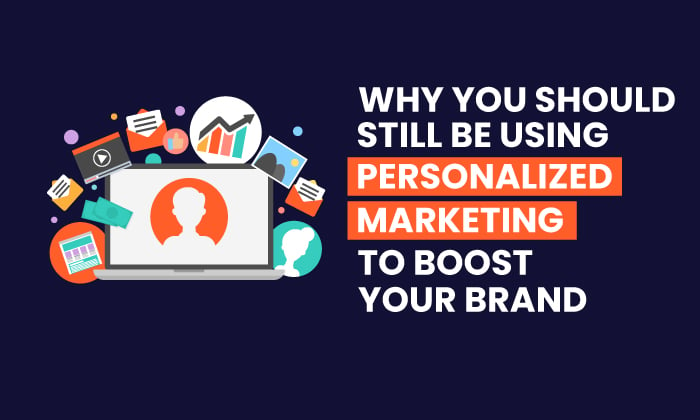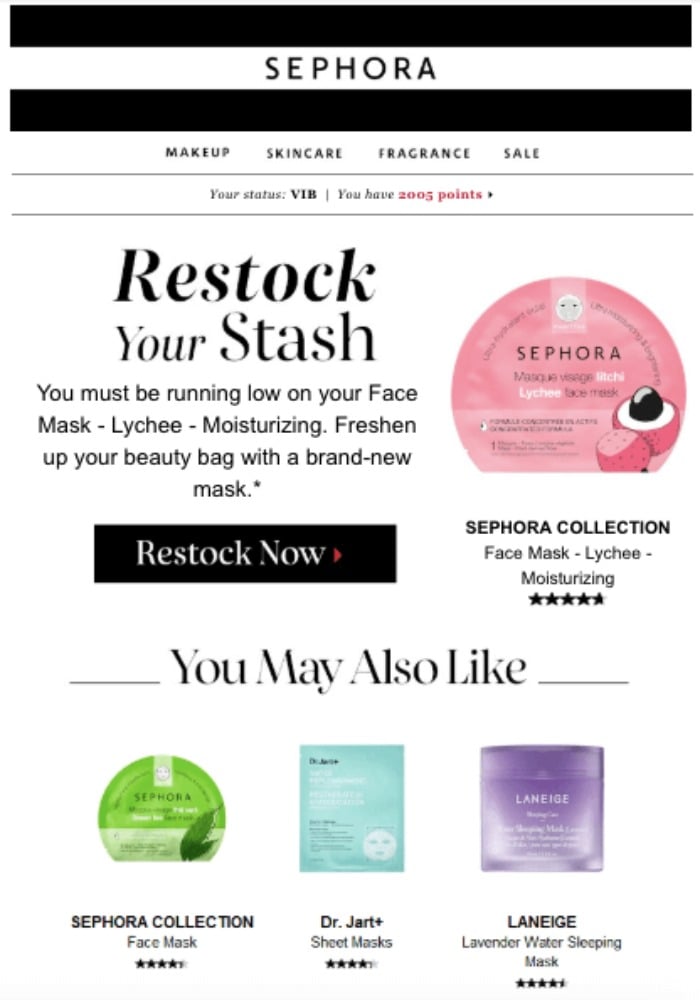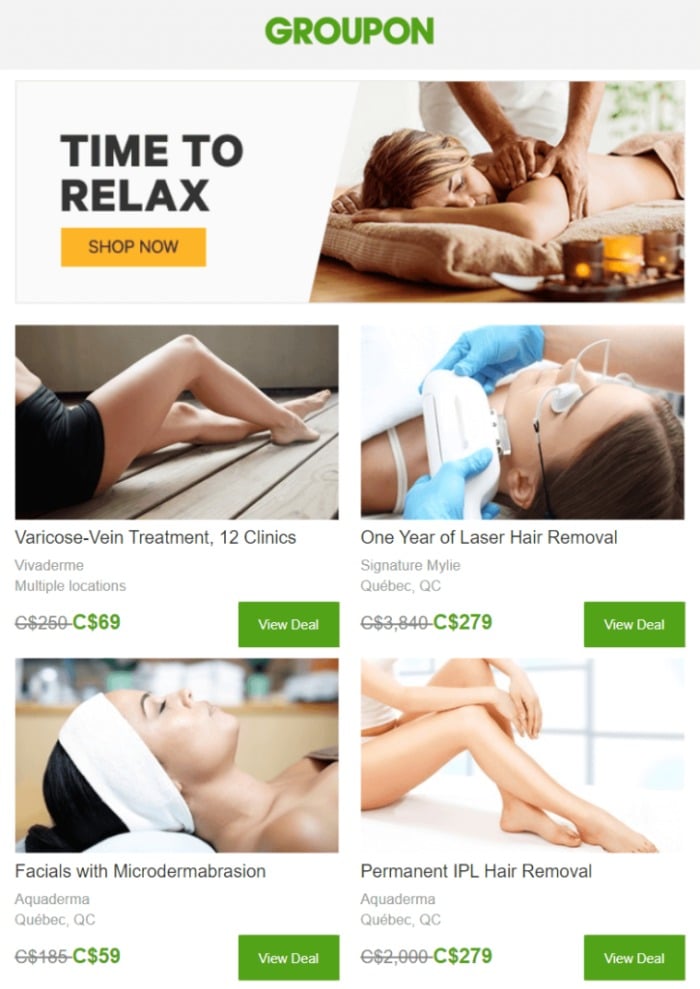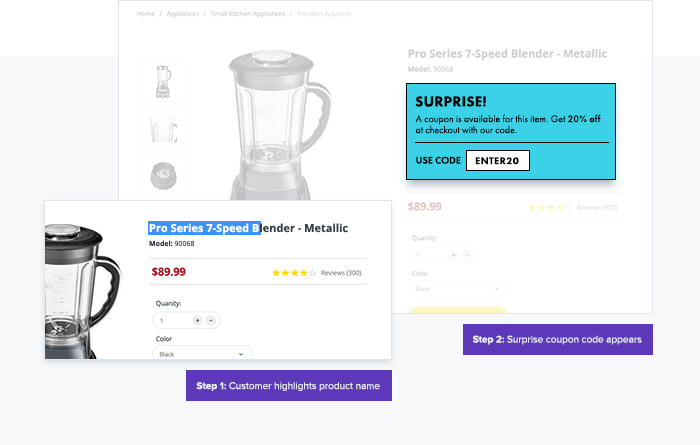
It’s getting harder than ever to connect with buyers and prospects on a personal level.
The good news? It is easier to build real, human connections with your audience if you know what data and strategies to use.
One of the most effective strategies to build a personal connection is personalized marketing.
What exactly is personalized marketing, and what are the benefits? (Hint: It’s more than adding “$FNAME” to your email marketing!)
Here is what marketers need to know about personalized marketing.
What Is Personalized Marketing?
Personalized marketing is a strategy that uses demographic and behavioral data to create individualized messages for current or prospective customers.
It’s incredibly popular, with research from Statista showing that 78 percent of marketers use personalized marketing in their email marketing alone. Most marketers use the strategy on multiple channels.
The point of personalized marketing is to understand your customers more and how they like to communicate so you can better engage them in the busy online world.
There are three main categories of personalization: behavioral, contextual, and demographic.
- Behavioral personalization analyzes customer interactions with your company, such as past purchases or website behavior.
- Contextual personalization considers where customers are in their journey.
- Demographic personalization examines demographics like age, gender, race/ethnicity, and household income level.
Companies have used personalized marketing for years to improve engagement rates, but factors like the growth of AI and data analytics are making it easier than ever for even smaller companies to get on board.
Personalized marketing is also one of the best ways to engage customers between channels and send more relevant marketing messages.
Different Types of Personalized Marketing
Before we dig into all the benefits of personalized marketing, it’s worth looking at the different types of personalization. Keep in mind that different approaches might be more effective based on your audience, industry, and business model.
There are four main types of personalized marketing. Let’s look at them one-by-one.
Segmentation
This is a technique marketers use to divide their list into smaller groups or segments.
Segmentation helps brands to understand their customers better and target their products accordingly.
You can implement email segmentation by analyzing the customer data and behavior over various channels to deliver the content and style most valuable to your buyers/prospects.
You can also use segmentation to identify where the customer is in their journey or to encourage sales.
An example of email segmentation in action is Sephora.

The beauty brand sends out segmented emails to remind customers to restock on items they’re likely running low on. Sephora’s approach nudges buyers into heading over to its site and getting the product.
Further, Sephora makes it almost effortless for customers to repurchase; they’ve just got to click on the message and it takes them right to the item.
Segmentation can also be used to deliver personalized content, lead magnets, paid ads, etc. Essentially, the goal is to separate your audience into segments and deliver more relevant messages.
Personalized Emails
A personalized marketing email is an email that aims to address the personal needs of a recipient the company has had some kind of previous interaction with.
Companies send personalized emails to buyers or to prospects who have shown an interest in certain products. Typically, these emails go further than addressing the customer by name. For example:
- they personalize subject lines
- companies send them to welcome new customers and acknowledge orders
- they target consumers who’ve abandoned carts
For further personalization, businesses can use their data and track consumers’ behavior to tailor the emails and increase the chances of a purchase.
A popular use for such messaging is product recommendations, like this one from Groupon, which focuses on pampering experiences a customer may appreciate.

Dynamic Websites
Dynamic websites are a form of web design that relies on real-time data to provide a personalized experience.
Most often, businesses use them to create engaging customer experiences in a way that is more meaningful and personal to the individual.
An example is dynamically adjusting a webpage to display specific categories or products first.
Travel companies might also use dynamic websites to adjust their homepage to focus on the city a visitor has researched:

The homepage to the left is the site’s standard homepage, while the right side shows to a visitor who has researched flights to Dubai.
One-to-One Personalized Marketing
One-to-one personalized marketing is all about reaching out to a customer. It’s more than just sending emails to the same group of people: It’s about creating tailored content for each individual.
This approach takes personalized marketing to a new level and puts the focus on data, like:
- demographics
- geographical locations
- devices they’re using (Smartphone, laptop, etc.)
- past purchases
Businesses then use all this info to make specialized discounts like the one below or offer other incentives to get a prospect over the sales line.

Product Recommendations
We’ve all seen the emails or ads you get after you’ve purchased a product or used a service from a company.
For instance, when you buy or search for something on Amazon, you get messages like “more top picks for you,” “your browsing history,” or “keep shopping for.” Like one-to-one personalized marketing, product recommendations use behavioral data, such as purchase and search history, to deliver personalized recommendations.
For example, a razor company might see you purchased a razor a few weeks ago and recommend a shaving cream.
What Are the Benefits of Personalized Marketing?
One of the main benefits of personalized marketing is that it is more affordable. Messages are more direct, which means you spend far less time (and money) targeting users that aren’t likely to convert.
However, that’s not the only benefit.
Customers Prefer Personalized Messages
According to a report by Smarter HQ, 90 percent of consumers are willing to share personal data for an easier or cheaper brand experience.
An Epsilon survey found 80 percent of consumers are more likely to do business with a company if it offers personalized experiences—and 90 percent say they find personalization appealing.
Buyers like brands to treat them as individuals and respond to their pain points. Personalized marketing does that, and tailored campaigns and follow-up emails make your customers feel valued and appreciated.
Better Understand Your Customers
You already know how to gather information like demographic data, search and purchase history, and social media activity.
However, AI and marketing automation technologies enable marketers to gain an even better understanding of who their customers are and what they need. For example, you might find that high-revenue customers prefer a specific channel, like email.
Digging into the data for personalization gives you more insights into who your customers are, what they want, and what will drive them to make a purchase.
That data can be used to improve other marketing strategies, inform rebranding, and much more.
Improve ROI of Marketing Efforts
Personalized marketing is a simple way to improve your overall marketing ROI by providing what the user wants.
In fact, personalized marketing can reduce acquisition costs by as much as 50 percent.
Here’s more proof: HubSpot found personalized CTAs perform 202 percent better than basic CTAs.
Additionally, it’s a way to build customer loyalty and brand recognition while reducing your acquisition costs.
Improving your ROI starts with your data to produce accurate customer profiles to create relevant content and offers for them.
A great example of this is McDonald’s.
The fast-food giant took things a step further than most by acquiring AI firm Dynamic Yield to personalize digital menus. Later, Mastercard purchased Dynamic Yield from McDonald’s to further improve their customer experience.
As Raj Seshadri, President of Data & Services, Mastercard, puts it:
The notion of going into a store or opening a webpage to find an experience perfectly tailored to you is no longer farfetched. It’s a reality that more brands are deploying and more consumers expect.
While most of us don’t have McDonald’s or Mastercard’s budget, you can still use personalized marketing to get results by relying on data from first-party tools that track users on your site or tools like HubSpot.
Increase Customer Engagement
Every company strives for more customer engagement, and personalized marketing helps you get there. It all begins with understanding your customer base in terms of demographic, psychographic, and behavioral data and tailoring efforts for each individual.
In practice, that means:
- knowing your customers’ expectations
- taking an omnichannel approach
- analyzing your data
That data can be used to speak directly to users on their preferred platforms about the topics important to them.
When you succeed at customer engagement, the rewards are priceless: Loyalty improves, revenues increase, and your business grows along with consumer trust.
Improve Customer Retention
Personalization makes it easier to identify your customers’ needs and provide them with solutions that will solve them—and that increases retention.
As a McKinsey report explains, when brands use customization correctly, they do more than just survive; they thrive.
Plus, 60 percent of customers say they’re likely to repeat if a brand offers personalized interactions.
With numerous personal touchpoints at each stage of the customer journey, sales increase, and customers stay loyal.
That’s a win for your customer and your brand.
Enhance Email Open Rates
Email open rates are the metric most email marketers focus on, and with good reason: if your list isn’t opening your emails, you’re not making any money.
There are many ways to improve your email open rates, such as:
- personalize your email content through segmentation
- adjust your content so it’s relevant to the readers
- send emails at the right time of the day
- adjust your CTAs to be more appealing
By using personalized marketing methods, you can increase your email open rates dramatically.
However, it’s more than ensuring you have your customer’s name in the subject line. It’s also about providing personalized discounts while creating headlines, snippets, and content that connects with them personally.
When you do this, customers feel like you understand them and what they want.
Personalized Marketing Frequently Asked Questions
What are examples of personalized marketing?
Personalized marketing examples include a dynamic website that adjusts content based on user behavior or product recommendations that are generated based on past purchases.
How do I get data to use for personalized marketing?
The most common way to get information for personalized marketing is through your existing customer data from social media platforms like Facebook and Twitter. Alternatively, you can use third-party tools like Google Analytics, Adobe Analytics, or Marketo to aggregate customer data from different sources.
What tools can I use to personalize my marketing?
Tools to help with marketing personalization include HubSpot, OptinMonster, and Evergage. Here’s a full list of tools to consider.
Why is personalized marketing important?
Personalized marketing is imperative because it improves customer engagement and generates higher conversion rates. It also provides a better customer experience and develops deeper relationships with your audience.
Conclusions: Personalized Marketing
Personalized marketing is a powerful tool for marketers and business owners. It has an increased ROI and leads to higher conversion rates.
A personalized marketing campaign also increases customer loyalty by creating that personal connection with them, which makes them feel valued and appreciated.
By focusing on what is most relevant to the individual, there is a higher chance of them making a purchase than by only sending an email packed with generic information that doesn’t apply.
Although personalized marketing may be time-consuming, it’s well worth the effort to grow your business.
Do you use personalized marketing? How has it transformed your business?
This marketing news is not the copyright of Scott.Services – please click here to see the original source of this article. Author: Neil Patel
For more SEO, PPC, internet marketing news please check out https://news.scott.services
Why not check out our SEO, PPC marketing services at https://www.scott.services
We’re also on:
https://www.facebook.com/scottdotservices/
https://twitter.com/scottdsmith
https://plus.google.com/112865305341039147737
The post Why You Should Still Be Using Personalized Marketing to Boost Your Brand appeared first on Scott.Services Online Marketing News.
source https://news.scott.services/why-you-should-still-be-using-personalized-marketing-to-boost-your-brand/
No comments:
Post a Comment